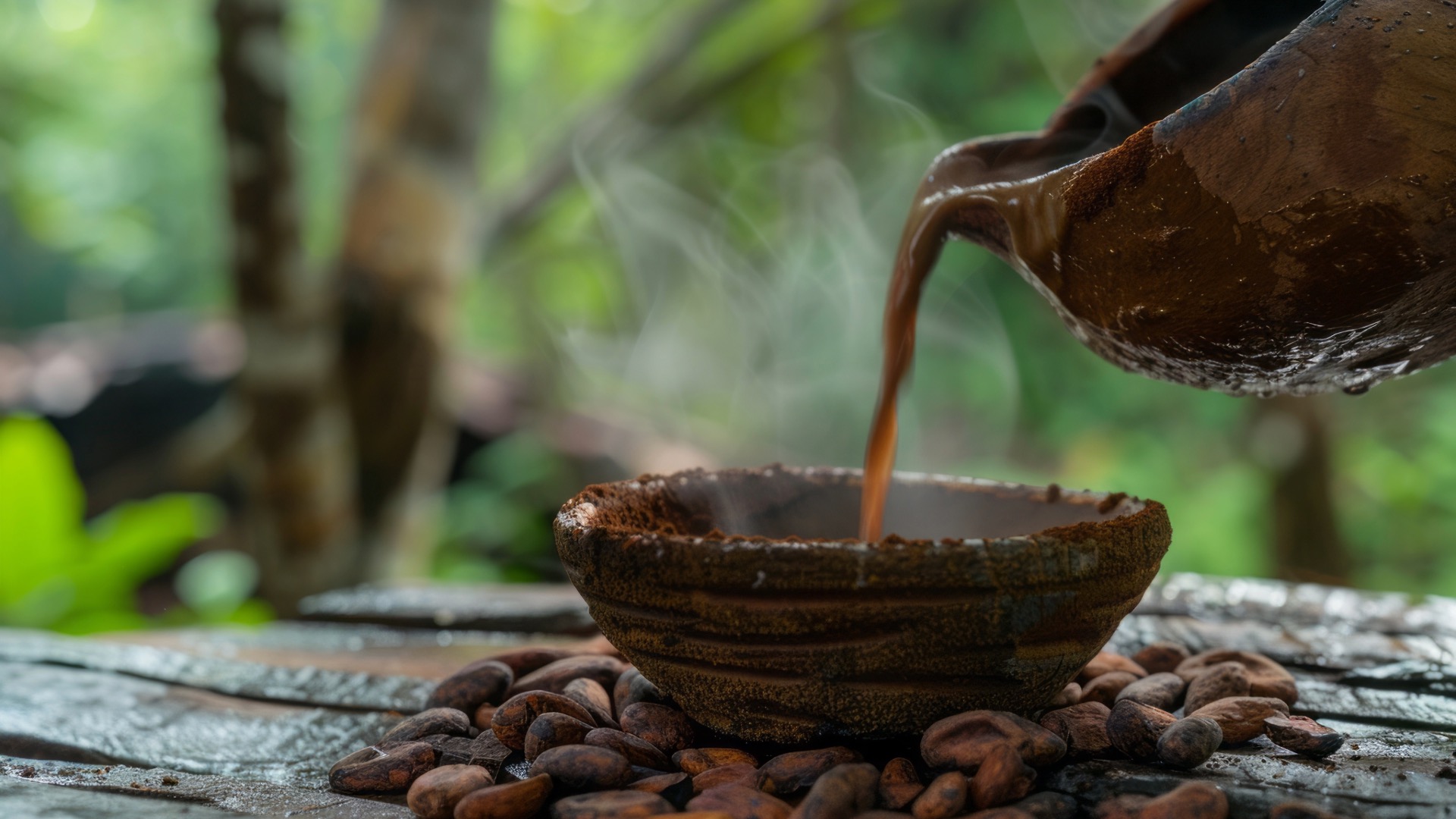Cacao, often referred to as the “food of the gods,” holds a special place in cultures around the world. But not all cacao is created equal. While ceremonial cacao and regular cacao may come from the same source, their processing methods, purposes, and qualities set them apart. In this article, we’ll explore the key differences between these two forms of cacao to help you understand their unique roles and benefits.
1. Purpose and Intention
The primary distinction between ceremonial cacao and regular cacao lies in their intended use.
- Ceremonial Cacao: This cacao is crafted specifically for rituals, meditation, and spiritual practices. It is used as a heart-opening tool to connect with oneself, others, and the natural world. Its preparation and consumption are infused with intention and reverence.
- Regular Cacao: Regular cacao, often found in grocery stores, is primarily used for culinary purposes. It’s the main ingredient in chocolate products, baked goods, and beverages, with little emphasis on ritual or spiritual connection.
2. Sourcing
- Ceremonial Cacao: The beans are usually sourced from small-scale, ethical farms that honor traditional cultivation methods. These farmers often preserve ancient heirloom varieties, such as Criollo, known for their rich flavor and cultural significance.
- Regular Cacao: While regular cacao can also be ethically sourced, it is often mass-produced. Large-scale production prioritizes yield over quality, and the beans may lack the depth of flavor and cultural connection found in ceremonial cacao.
3. Processing
- Ceremonial Cacao: This cacao is minimally processed to retain its natural nutrients and energetic properties. The beans are fermented, sun-dried, roasted lightly (if at all), and stone-ground into a paste. This process preserves the integrity of the cacao, ensuring it remains as close to its natural state as possible.
- Regular Cacao: Regular cacao undergoes more intensive processing. It is often roasted at higher temperatures, alkalized, and stripped of its natural fats (cacao butter). This results in cocoa powder or processed chocolate, which may contain additives like sugar, milk, or emulsifiers.
4. Nutritional Content
- Ceremonial Cacao: Rich in magnesium, iron, antioxidants, and theobromine, ceremonial cacao is a superfood that nourishes the body and mind. It also retains its natural cacao butter, which contributes to its creamy texture and nutrient density.
- Regular Cacao: While regular cacao can still offer health benefits, much of its nutrient profile is diminished during processing. Cocoa powder and chocolate products may also include added sugars and fats, reducing their overall nutritional value.
5. Taste and Texture
- Ceremonial Cacao: With its earthy, robust flavor, ceremonial cacao delivers a rich, authentic taste. The texture is smooth and dense, reflecting its high cacao butter content.
- Regular Cacao: Regular cacao, especially in the form of cocoa powder or commercial chocolate, has a milder flavor due to processing. Additives like sugar and milk often mask the natural bitterness of cacao.
6. Cultural and Spiritual Significance
- Ceremonial Cacao: Ceremonial cacao has deep roots in Mesoamerican traditions, where it was used by the Mayans and Aztecs in sacred rituals. Consuming it is seen as a way to honor its heritage and connect with ancient wisdom.
- Regular Cacao: While cacao has historical significance, its modern culinary applications often lack the spiritual and cultural dimensions associated with ceremonial use.
7. Preparation
- Ceremonial Cacao: Preparing ceremonial cacao is a meditative process. The cacao paste is gently melted with water (and sometimes spices) to create a thick, rich drink. Sweeteners are optional and kept to a minimum to honor the cacao’s natural flavor.
- Regular Cacao: Regular cacao is typically prepared with added sweeteners, milk, or other flavorings, making it more of a dessert or indulgence.
Why Choose Ceremonial Cacao?
If you’re seeking a deeper connection to cacao as a plant medicine or a tool for mindfulness, ceremonial cacao offers an unparalleled experience. Its purity, nutritional benefits, and spiritual resonance make it ideal for those looking to integrate intentional practices into their lives.
On the other hand, regular cacao serves as a versatile ingredient for everyday culinary needs. While it may lack the profound qualities of ceremonial cacao, it still provides a taste of the magic that cacao has to offer.
The difference between ceremonial cacao and regular cacao is profound, extending beyond taste and texture to encompass purpose, process, and intention. By understanding these differences, you can choose the type of cacao that aligns with your goals—whether it’s a heart-centered ritual or a delicious treat.
At School of Cacao, we honor the rich history and cultural significance of ceremonial cacao. Explore our offerings to experience the transformative power of this ancient plant medicine.
Would you like more guidance on preparing ceremonial cacao or incorporating it into your rituals? Let us know in the comments below!

